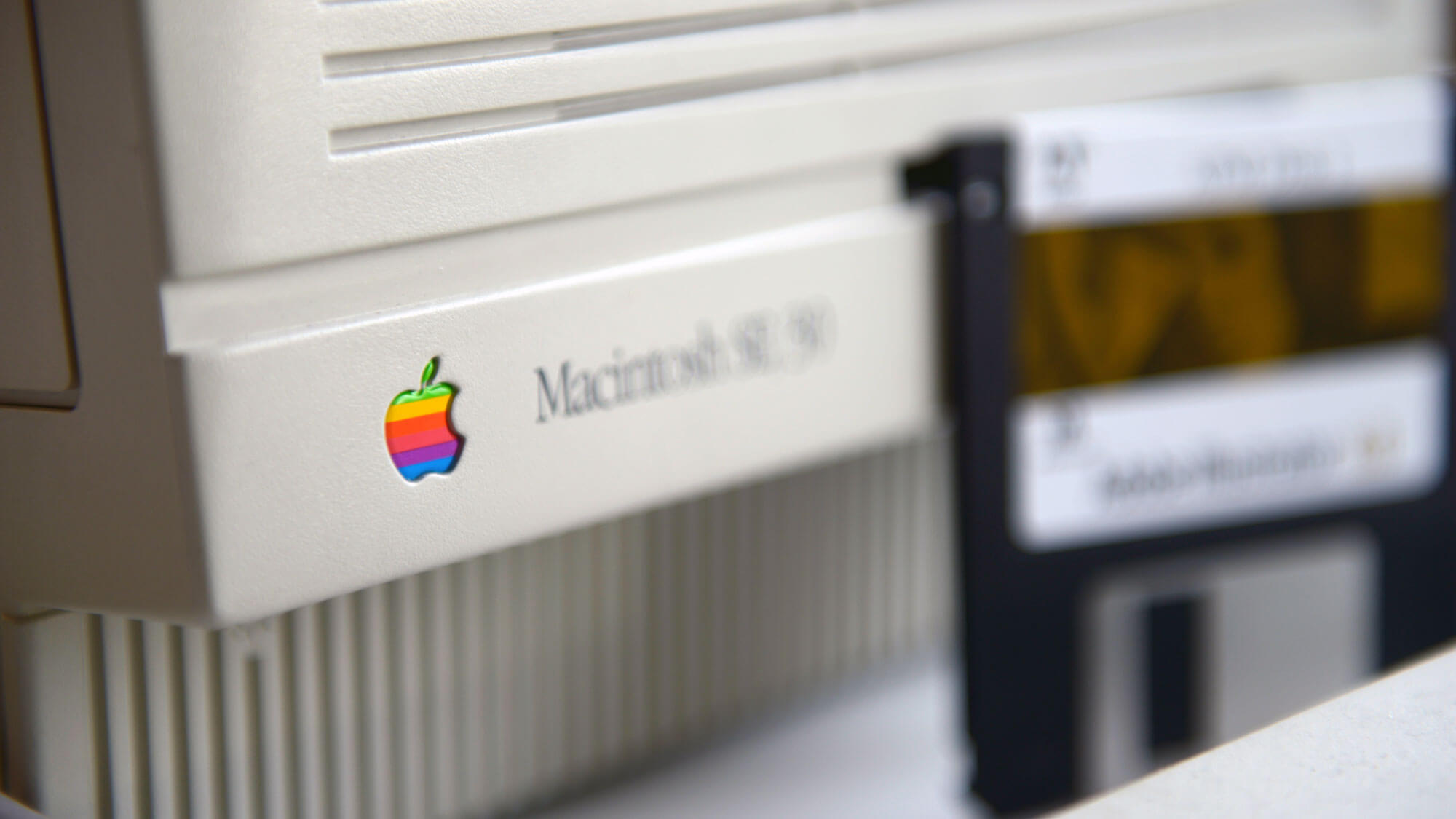The Fallacy of the Aha Moment & Overnight Success in Innovation
We’ve all heard the story of Newton and the apple.
According to the legend, he came up with the theory of gravity when he was sitting under a tree and an apple fell on his head, at which point it all suddenly dawned on him.
We love to hear stories of these great aha moments. The question is, are they true? Are innovations really born out of these miraculous moments of insight?
Let’s dig a little deeper.
Why aha moments don’t really matter
Let’s not beat around the bush: the unfortunate truth is that almost every one of these stories is either fake, or at best, an exaggeration or oversimplification.
The real stories behind some of the famous examples people usually refer to when they talk about big aha moments and overnight successes are often quite different. Let’s look at a few of these examples.
Newton and the Apple
If we look back at the story of Newton and the apple, there are a number of issues with it.
First of all, there’s no record of an apple ever hitting him.
He was actually first heard discussing the event many decades later, and even then, he only talked about seeing an apple fall to the ground in his orchard. There were also many other contemporaries who were working on gravity and Newton was certainly quite familiar with their works, some of which even became key concepts of his theory.
There were also many other contemporaries who were working on gravity and Newton was certainly quite familiar with their works, some of which even became key concepts of his theory.
Even if the story of a falling apple inspiring him, instead of the works of his contemporaries, is true, it still took him more than 20 years to publish the idea in his landmark work, Principia. Clearly more than an aha-moment was needed.
Steve Jobs and the Macintosh
As the story would have it, Steve Jobs decided to create the Macintosh with its graphical user interface after an inspiring visit to Xerox PARC where they had working prototypes with all of the key features that the Macintosh would eventually feature.
In reality, the story is much more complicated. Apple had actually started work on the system, and all of its key innovations, already prior to the visit. What’s more, there were actually not just one but two visits, and Steve Jobs only participated on the second visit when a key employee said he should do it to understand the importance of the innovations they were already working on.
What’s more, there were actually not just one but two visits, and Steve Jobs only participated on the second visit when a key employee said he should do it to understand the importance of the innovations they were already working on.
Furthermore, it still took 5 more years and countless hours of work after the visit until the Macintosh was finally released.
Charles Darwin and the Galápagos Islands
As the story would have it, Charles Darwin was inspired by the unique nature of the Galápagos Islands and put the pieces together for the theory of evolution during his visit there.
In particular, there were species that still lived there and closely resembled those that had already gone extinct elsewhere, which provided him with the key insights for the theory of evolution. While the visit unquestionably left an impression on him, the theory was actually only developed through the many conversations he had years after the visit with people who had also done research on the topic.
While the visit unquestionably left an impression on him, the theory was actually only developed through the many conversations he had years after the visit with people who had also done research on the topic.
A good 7 years after the visit, Darwin had just managed to narrow in on the key concepts, and had created a 35-page pencil draft of the theory.
It took another 17 years before he actually published his findings in his book on the topic, On the Origin of Species.
The Post-It note
In 1968, 3M was trying to invent a new ultra-strong adhesive, when an experiment went wrong. The end result was an adhesive that was very weak but reusable as it peeled off without leaving stains.
What’s usually left out from the story is that the Post-It note wasn’t actually born at that moment.
For the next 5 years, the inventor tried to convince management to commercialize the new material, but they didn’t see the potential. After a change in management, he was then able to get green light for the project, but failed to come up with any product ideas that could be commercially viable.
Sometime later, the team realized that they could apply the adhesive directly on the paper. The idea, however, wasn’t easy to implement. It apparently took them several years to make the product work. Once they then had a working product, it quickly became popular within the company. However, management still didn’t see commercial potential for the concept, and it was again shelved.
Once they then had a working product, it quickly became popular within the company. However, management still didn’t see commercial potential for the concept, and it was again shelved.
After the team persisted, they were finally given green light to launch the Post-It a mere 9 years after the initial failed experiment.
Initial commercial success, however, was very poor because customers didn’t see the value the product offered.
A year later the team came up with the idea of sending large numbers of free samples directly to companies, along with a re-order form. To their surprise, a whopping 90% re-ordered and Post-Its were finally on their way to becoming the iconic product we now know them as.
Nespresso capsules
As I first heard the story, a Nestlé engineer visited a very popular espresso bar in Rome and was inspired by the process they used to make their coffee and wanted to create a home coffee product that could get the same results. This then led to the creation of Nespresso.
What’s left out is that the engineer in question, Eric Favre, had just married an Italian woman and she was giving him a hard time about the poor quality of their coffee. He wanted to show her that the Swiss actually have the capacity to make a great espresso.
In the next few months, he started working on a prototype and then went to Rome to look for the perfect blend. Once he'd found the right place, his wife discovered that their secret was repeat aeration during the pour, which then led him to create the iconic capsule design. However, Favre was initially unable to convince management of the idea.
However, Favre was initially unable to convince management of the idea.
Eight years later he was sent to Japan on an assignment where he was able to convince the local chief executive on the merits of Nespresso. That ultimately led to the launch of Nespresso, a mere 11 years after the original aha moment.
However, as with Post-Its, sales were quite poor in the beginning.
It took another decade, and a change in leadership, before they shifted to a new sales strategy that focused on allowing users to experience the product themselves before they started to see results.
Once they doubled down on that strategy, sales picked up big time and Nespresso then quickly became the fastest growing and most profitable part of Nestlé.
What are the common elements in all of the stories?
In all of the stories, the innovators certainly had ideas, and as is almost always the case, the good ideas didn’t come to them in a brainstorming meeting.
As I’ve written before, great ideas usually come when you’re able to connect and put together two or more distinct ideas.
In practice, that typically happens when you’re relaxed, distracted or simply exposed to completely different kinds of ideas, so it naturally makes sense that the best ideas don’t come to you when you’re at the office.
However, there is another factor that all of these stories have in common, and it’s an even more important one: they took action and persisted.
What all of these stories have in common is that innovators took action and persisted through the inevitable challenges.
The reason for us even having heard of these people, and their discoveries or creations, is the fact that they put in years of hard work to prove their theories and make their ideas come into reality.
I’m sure there are countless other people who actually did get hit in the head by an apple before Newton, yet never put the pieces together like he did.
Why are we drawn to these stories?
So, if the reality is so different, why are we telling these stories?
In essence, because we humans are suckers for a good story. Stories sell and people remember simple stories extremely well.
These stories of sudden aha moments and overnights successes are obviously very inspiring and comforting for us. After all, if others have had these kinds of moments and successes, what’s stopping us from having one ourselves? All of that means that basically everyone has a lot of incentive to exaggerate, oversimplify, or otherwise put a spin on the original story.
All of that means that basically everyone has a lot of incentive to exaggerate, oversimplify, or otherwise put a spin on the original story.
- Innovators do this to get others to back their ideas, or to sell their products.
- Innovators might also do this to brand themselves as creative geniuses. It is, after all, much cooler to be a genius than it is to be a hard worker.
- Companies might do this to try to have something interesting to talk about with journalists.
- Journalists write cool stories that inspire readers, and sell their work.
With all the information we’re being bombarded with every day, it’s harder and harder to stand out from the crowd, but a great story still has the power to do that. That means that the trend is likely to continue.
Why is that a problem?
These stories aren’t, however, just a harmless bit of color on the truth. When all that people hear about are these aha-moments and overnight successes, they start to believe in them.
They provide would-be innovators with completely unrealistic expectations, which leads to a few very common problems that we see many innovators having these days.
Waiting for the perfect idea
Would-be innovators often wait for the perfect idea or inspiration to strike before they start to put in work, which unfortunately doesn’t make any sense.
How can you suddenly come up with a miraculous solution if you don’t even know what the problem is?
The ideas will come to you once you actually start working on a meaningful problem.
Expecting overnight success
Would-be innovators also often think that the hard part is coming up with the idea.
Spoiler alert: it isn’t.
They expect great ideas to suddenly become overnight successes, and when they don't, they think there’s something wrong with the idea and either give up entirely, or if they’re tenacious, move on to the next idea.
This famous statement by Thomas Edison captures the essence of both of these challenges eloquently:
"None of my inventions came by accident. I see a worthwhile need to be met and I make trial after trial until it comes. What it boils down to is one percent inspiration and ninety-nine percent perspiration."
– Thomas Edison
Management bias
These false perceptions also cause challenges in the corporate context because most decision-makers don’t have first-hand experience from innovation.
But even if they don’t have the experience, they’ve all heard the stories of these great ideas and innovations.
As a result, many managers think that they can easily tell the good ideas from the bad ones, just like Newton supposedly did when he saw the apple fall. Well, you usually can’t. The same managers might also think that great ideas and innovations should always be huge businesses by year 3, which they usually won’t be. The reality looks much more like the extended timelines we saw in the examples referred above.
The same managers might also think that great ideas and innovations should always be huge businesses by year 3, which they usually won’t be. The reality looks much more like the extended timelines we saw in the examples referred above.
So, if even the long-range planning in your organization doesn't go beyond year 3, it's going to be very difficult to rally support or budget for any kind of transformative breakthrough innovation. They will, simply put, always take years of hard work and quite a bit of persistence.
Even the epitome of lightning-fast growth, Facebook, took their time to become a great business. It took three years from the launch of the first version before the general public was even allowed to sign up, and many more years before the company started to generate meaningful revenue.
Thus, if you work in a large organization, make sure that the stakeholders, be they investors, managers, or your colleagues, are aware of the harsh realities of innovation.
If they expect miracles, it’s quite likely that the consensus will quickly shift against innovation.
Conclusion
So, to conclude, don’t fall victim to these stories of miraculous aha moments and don't start believing in overnight success.
Experienced innovators know that doing anything new that will have a big impact will always be difficult and take quite a bit of time.
When it comes to innovation, it’s better to be a tenacious pessimist, than it is to be a naïve optimist, even if you do ultimately need to believe in what you're doing and be open to new ideas.
Once you embrace the harsh realities of innovation and accept that it's not all fun and games, you’ll be well prepared to overcome the challenges that you’re inevitably going to face.
It might not be the most exciting story to hear, but remember that the journey of real heroes is always fraught with plenty of challenges, hard work and learning.
__________
Join thousands of other innovators and get the latest insights on leading innovation straight to your inbox monthly!





